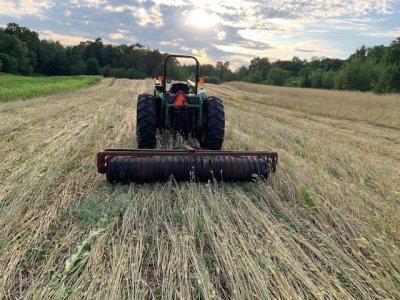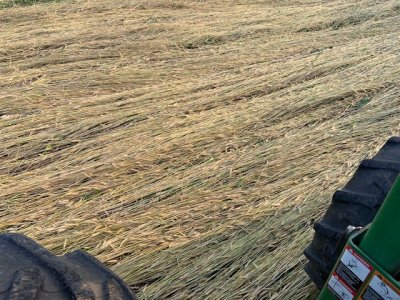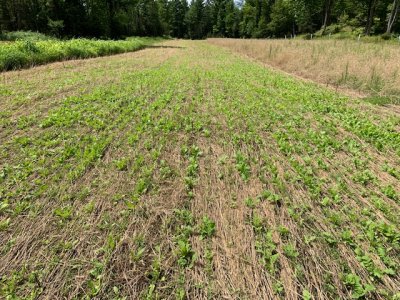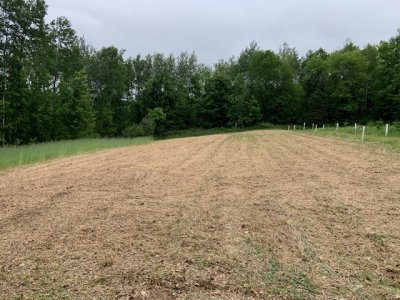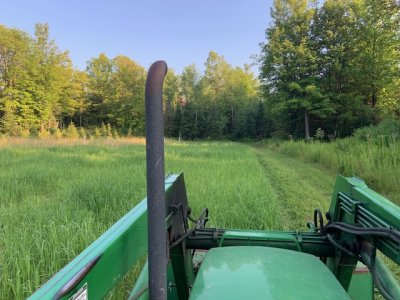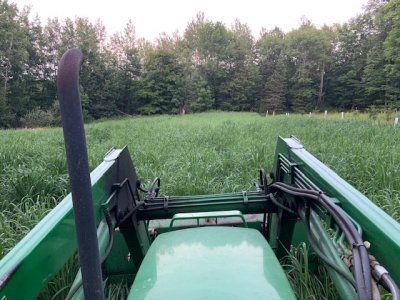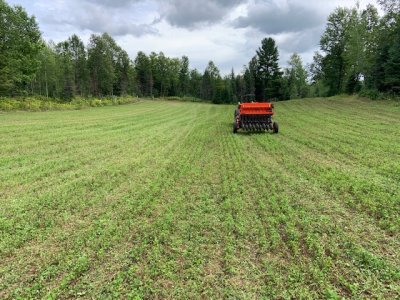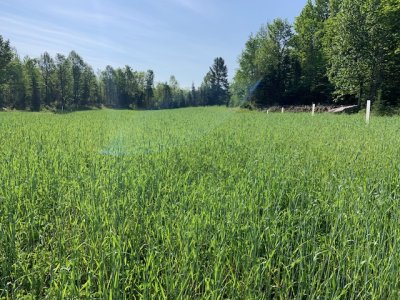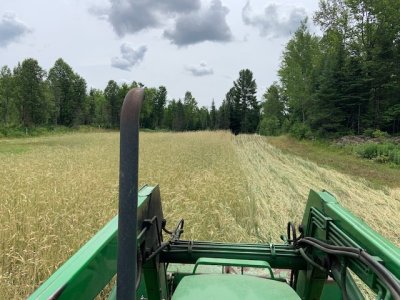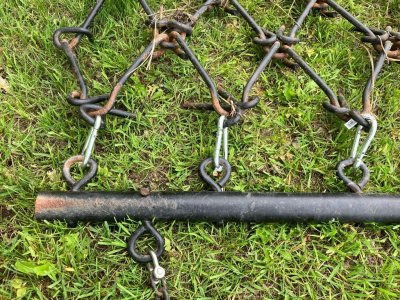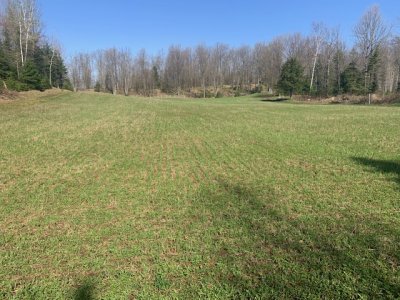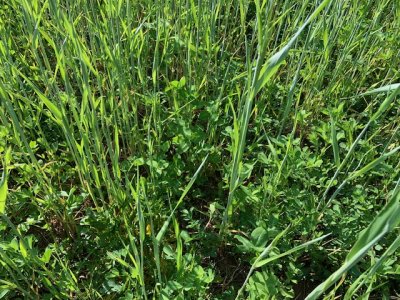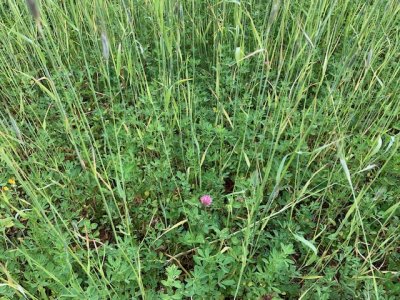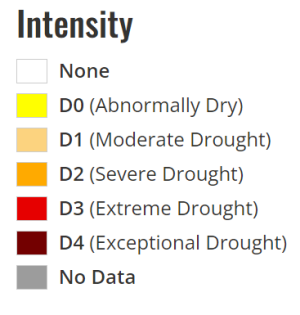This is good SD and I agree with you wholeheartedly. There is another option which I used in a few of my alfalfa /clover plots.
I knew that I wanted to rotate from alfalfa/clover to brassicas this year to utilize the banked Nitrogen from 3 years of alfalfa and clover growth. But I also wanted that balance that you suggest with some carbon, and I also wanted some additional thatch to plant my brassicas into this year...
Lots of Nitrogen in the roots of these alfalfa and clover plants...
View attachment 55154
So last fall I mowed the alfalfa/clover fairly short and then drilled cereal rye into it at 75#/acre...(I probably should have gone up to 100#/acre) ...
View attachment 55155
The rye fed my deer last fall and this spring, and by June 1st was putting on growth to help with my goals....
View attachment 55156
and this is what it look like a week or so ago when I rolled it and then drilled my brassica/clover mix into it. Had it not been for the drought conditions this year I am sure the rye would have been much taller...
View attachment 55157
More than one way to skin the cat as they say.
I haven't fertilized this plot for a few years but here is what the soil test looked like in 2021 - the last time I soil tested. I didn't fertilize this year either so I don't expect to get giant turnips and radishes but I do expect to have some decent forage. Time will tell.
View attachment 55158


